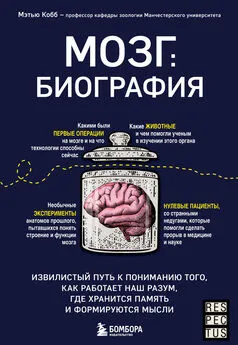Барбара Тверски - Ум в движении [Как действие формирует мысль] [litres]
- Название:Ум в движении [Как действие формирует мысль] [litres]
- Автор:
- Жанр:
- Издательство:Литагент Альпина
- Год:2020
- Город:Москва
- ISBN:978-5-0013-9354-2
- Рейтинг:
- Избранное:Добавить в избранное
-
Отзывы:
-
Ваша оценка:
Барбара Тверски - Ум в движении [Как действие формирует мысль] [litres] краткое содержание
Книга известного когнитивного психолога Барбары Тверски посвящена пространственному мышлению. Это мышление включает в себя конструирование «в голове» и работу с образами в отношении не только физического пространства, но и других его видов – пространств социального взаимодействия и коммуникации, жестов, речи, рисунков, схем и карт, абстрактных построений и бесконечного поля креативности. Ключевая идея книги как раз и состоит в том, что пространственное мышление является базовым, оно лежит в основе всех сфер нашей деятельности и всех ситуаций, в которые мы вовлекаемся.
Доступное и насыщенное юмором изложение серьезного, для многих абсолютно нового материала, а также прекрасные иллюстрации привлекут внимание самых взыскательных читателей. Они найдут в книге как увлекательную конкретную информацию о работе и развитии пространственного мышления, так и важные обобщения высокого уровня, воплощенные в девять законов когниции.
Ум в движении [Как действие формирует мысль] [litres] - читать онлайн бесплатно ознакомительный отрывок
Интервал:
Закладка:
Wai, J., Lubinski, D., & Benbow, C. P. (2009). Spatial ability for STEM domains: Aligning over 50 years of cumulative psychological knowledge solidifies its importance. Journal of Educational Psychology , 101(4), 817.
Области мозга, отвечающие за пространственные и математические способности, пересекаются
Dehaene, S., Bossini, S., & Giraux, P. (1993). The mental representation of parity and number magnitude. Journal of Experimental Psychology: General , 122, 371–396.
Пространственные способности важны для объяснения понятий из областей STEM
Bobek, E., & Tversky, B. (2016). Creating visual explanations improves learning. Cognitive Research: Principles and Implication s, 1(1), 27.
Daniel, M. P., & Tversky, B. (2012). How to put things together. Cognitive Processing , 13(4), 303–319.
Hegarty, M. (2004). Mechanical reasoning by mental simulation. Trends in Cognitive Sciences , 8(6), 280–285.
Hegarty, M., & Kozhevnikov, M. (1999). Types of visual-spatial representations and mathematical problem solving. Journal of Educational Psychology , 91(4), 684.
Tversky, B., Heiser, J., & Morrison, J. (2013). Space, time, and story. In B. H. Ross (Ed.), The psychology of learning and motivation (pp. 47–76). San Diego, CA: Elsevier Academic Press. https://doi.org/10.1016/B978–0–12–407237–4.12001–8.
Пространственные способности представителей разных профессий различаются
Blazhenkova, O., & Kozhevnikov, M. (2009). The new object-spatial-verbal cognitive style model: Theory and measurement. Applied Cognitive Psychology , 23(5), 638–663.
Blajenkova, O., Kozhevnikov, M., & Motes, M. A. (2006). Object-spatial imagery: A new self-report imagery questionnaire. Applied Cognitive Psychology , 20(2), 239–263.
Kozhevnikov, M., Kosslyn, S., & Shephard, J. (2005). Spatial versus object visualizers: A new characterization of visual cognitive style. Memory & Cognition , 33(4), 710–726.
Определенные пространственные способности обусловливают навигацию
Hegarty, M., Richardson, A. E., Montello, D. R., Lovelace, K., & Subbiah, I. (2002). Development of a self-report measure of environmental spatial ability. Intelligence , 30(5), 425–447.
Гендер и навигация
Dabbs, J. M., Chang, E. L., Strong, R. A., & Milun, R. (1998). Spatial ability, navigation strategy, and geographic knowledge among men and women. Evolution and Human Behavior , 19(2), 89–98.
Lawton, C. A. (1994). Gender differences in way-finding strategies: Relationship to spatial ability and spatial anxiety. Sex Roles , 30(11–12), 765–779.
Национальная академия наук рекомендует развивать пространственные способности
Committee on Support for Thinking Spatially. (2006). Learning to think spatially . Washington, DC: National Academies Press.
Многие виды деятельности развивают пространственные способности
Dye, M. W., Green, C. S., & Bavelier, D. (2009). The development of attention skills in action video game players. Neuropsychologia , 47(8), 1780–1789.
Dye, M. W. G., Green, C. S., & Bavelier, D. (2009). Increasing speed of processing with action video games. Current Directions in Psychological Science , 18(6), 321–326.
Борьба развивает пространственные способности
Moreau, D., Clerc, J., Mansy-Dannay, A., & Guerrien, A. (2012). Enhancing spatial ability through sport practice. Journal of Individual Differences , 33, 83–88.
Спорт и пространственные способности
Voyer, D., & Jansen, P. (2017). Motor expertise and performance in spatial tasks: A meta-analysis. Human Movement Science , 54, 110–124.
Развитие пространственных способностей у детей (и взрослых)
Ehrlich, S. B., Levine, S. C., & Goldin-Meadow, S. (2006). The importance of gesture in children’s spatial reasoning. Developmental Psychology , 42(6), 1259–1268.
Ferrara, K., Golinkoff, R., Hirsh-Pasek, K., Lam, W., & Newcombe, N. (2011). Block talk: Spatial language during block play. Mind, Brain and Education , 5(3), 143–151.
Frick, A., & Wang, S. H. (2014). Mental spatial transformations in 14- and 16-month-old infants: Effects of action and observational experience. Child Development , 85(1), 278–293.
Joh, A. S., Jaswal, V. K., & Keen, R. (2011). Imagining a way out of the gravity bias: Preschoolers can visualize the solution to a spatial problem. Child Development , 82(3), 744–745.
Kastens, K. A., & Liben, L. S. (2007). Eliciting self-explanations improves children’s performance on a field-based map skills task. Cognition and Instruction , 25, 45–74.
Levine, S. C., Ratliff, K. R., Huttenlocher, J., & Cannon, J. (2011). Early puzzle play: A predictor of preschoolers’ spatial transformation skill. Developmental Psychology , 48, 530–542.
Liben, L. S., & Downs, R. M. (1989). Understanding maps as symbols: The development of map concepts in children. In H. W. Reese (Ed.), Advances in child development and behavior (Vol. 22, pp. 145–201). New York, NY: Academic Press.
Newcombe, N. S. (2010). Picture this: Increasing math and science learning by improving spatial thinking. American Educator , 34(2), 29.
Newcombe, N. S., & Fricke, A. (2010). Early education for spatial intelligence: Why, what, and how. Mind, Brain, and Education , 4(3), 102–111.
Newman, S. D., Mitchell Hansen, T., & Gutierrez, A. (2016). An fMRI study of the impact of block building and board games on spatial ability. Frontiers in Psychology , 7, 1278. doi:10.3389/fpsyg.2016.01278.
Развитие пространственных способностей приносит результат
Uttal, D. H., Meadow, N. G., Tipton, E., Hand, L. L., Alden, A. R., Warren, C., & Newcombe, N. S. (2013). The malleability of spatial skills: A meta-analysis of training studies. Psychological Bulletin , 139, 352–402. doi:10.1037/a0028446.
Жестикуляция как основа языка
Rizzolatti, G., & Arbib, M. A. (1998). Language within our grasp. Trends in Neurosciences , 21(5), 188–194.
Жесты у человекообразных обезьян
Genty, E., & Zuberbühler, K. (2014). Spatial reference in a bonobo gesture. Current Biology , 24(14), 1601–1605.
Genty, E., & Zuberbühler, K. (2015). Iconic gesturing in bonobos. Communicative & Integrative Biology , 8(1), e992742.
Graham, K. E., Furuichi, T., & Byrne, R. W. (2017). The gestural repertoire of the wild bonobo ( Pan paniscus ): A mutually understood communication system. Animal Cognition , 20(2), 171–177.
Hobaiter, C., & Byrne, R. W. (2014). The meanings of chimpanzee gestures. Current Biology , 24(14), 1596–1600.
Moore, R. (2014). Ape gestures: Interpreting chimpanzee and bonobo minds. Current Biology , 24(14), R645–R647.
Pika, S., Liebal, K., & Tomasello, M. (2005). Gestural communication in subadult bonobos ( Pan paniscus ): Repertoire and use. American Journal of Primatology , 65(1), 39–61.
Передача культуры у человекообразных обезьян
Horner, V., Whiten, A., Flynn, E., & de Waal, F. B. (2006). Faithful replication of foraging techniques along cultural transmission chains by chimpanzees and children. Proceedings of the National Academy of Sciences , 103(37), 13878–13883.
Tomasello, M. (1994). Cultural transmission in the tool use and communicatory signaling of chimpanzees? In S. T. Parker & K. R. Gibson (Eds.), “Language” and intelligence in monkeys and apes: Comparative developmental perspectives (pp. 274–311). New York, NY: Cambridge University Press. http://dx.doi.org/10.1017/CBO9780511665486.012.
Whiten, A., Horner, V., & De Waal, F. B. (2005). Conformity to cultural norms of tool use in chimpanzees. Nature , 437(7059), 737.
Втягивание
Brennan, S. E., & Clark, H. H. (1996). Conceptual pacts and lexical choice in conversation. Journal of Experimental Psychology: Learning, Memory, and Cognition , 22(6), 1482.
Holler, J., & Wilkin, K. (2011). Co-speech gesture mimicry in the process of collaborative referring during face-to-face dialogue. Journal of Nonverbal Behavior , 35(2), 133–153.
Подражание – социальный клей
Chartrand, T. L., & Lakin, J. L. (2013). The antecedents and consequences of human behavioral mimicry. Annual Review of Psychology , 64, 285–308.
Chartrand, T. L., & Van Baaren, R. (2009). Human mimicry. Advances in Experimental Social Psychology , 41, 219–274.
Эмоциональное заражение
Decety, J., & Jackson, P. L. (2004). The functional architecture of human empathy. Behavioral and Cognitive Neuroscience Reviews , 3(2), 71–100.
Gallese, V., Keysers, C., & Rizzolatti, G. (2004). A unifying view of the basis of social cognition. Trends in Cognitive Sciences , 8, 396–403.
Gergely, G., & Watson, J. S. (1999). Early socio-emotional development: Contingency perception and the social-biofeedback model. Early Social Cognition: Understanding Others in the First Months of Life , 60, 101–136.
Hatfield, E., & Rapson, R. L. (2010). Emotional contagion. In I. B. Weiner & W. E. Craighead (Eds.), Encyclopedia of psychology (4th ed.). Hoboken, NJ: Wiley.
Meltzoff, A. N., & Moore, M. K. (1992). Early imitation within a functional framework: The importance of person identity, movement, and development. Infant Behavior and Development , 15(4), 479–505.
Oatley, K., Keltner, D., & Jenkins, J. M. (2006). Understanding emotions . Hoboken, NJ: Blackwell.
Раннее начало жестикуляции обещает раннее развитие речи
Iverson, J. M., & Goldin-Meadow, S. (2005). Gesture paves the way for language development. Psychological Science , 16(5), 367–371.
Özçalışkan, S., & Goldin-Meadow, S. (2005). Gesture is at the cutting edge of early language development. Cognition , 96(3), B101–B113.
Жестикуляция слепых
Goldin-Meadow, S. (2018, December 18). Harper lecture with Susan Goldin-Meadow: Hearing gesture: How our hands help us think [YouTube video]. Взято с сайта https://www.youtube.com/watch?v=LXaQAtGybFc.
Iverson, J. M., & Goldin-Meadow, S. (1997). What’s communication got to do with it? Gesture in children blind from birth. Developmental Psychology , 33(3), 453.
Iverson, J. M., & Goldin-Meadow, S. (1998). Why people gesture when they speak. Nature , 396(6708), 228–228.
Читать дальшеИнтервал:
Закладка:
![Обложка книги Барбара Тверски - Ум в движении [Как действие формирует мысль] [litres]](/books/1063976/barbara-tverski-um-v-dvizhenii-kak-dejstvie-formir.webp)
![Барбара Морриган - Сердце, что растопит океан [litres]](/books/1059584/barbara-morrigan-serdce-chto-rastopit-okean-litre.webp)
![Рольф Добелли - Искусство ясно мыслить [litres]](/books/1067492/rolf-dobelli-iskusstvo-yasno-myslit-litres.webp)
![Александр Кондрашов - Жизнь в движении [litres]](/books/1074016/aleksandr-kondrashov-zhizn-v-dvizhenii-litres.webp)
![Мартин Рис - Всего шесть чисел. Главные силы, формирующие Вселенную [litres]](/books/1082236/martin-ris-vsego-shest-chisel-glavnye-sily-formir.webp)
![Джон Гревилл Агард Покок - Момент Макиавелли: Политическая мысль Флоренции и атлантическая республиканская традиция [litres]](/books/1143945/dzhon-grevill-agard-pokok-moment-makiavelli-politi.webp)
![Кира Бег - Король моих мыслей [litres самиздат]](/books/1148970/kira-beg-korol-moih-myslej-litres-samizdat.webp)
![Ива Коде - Мы мыслим… [litres самиздат]](/books/1149538/iva-kode-my-myslim-litres-samizdat.webp)


